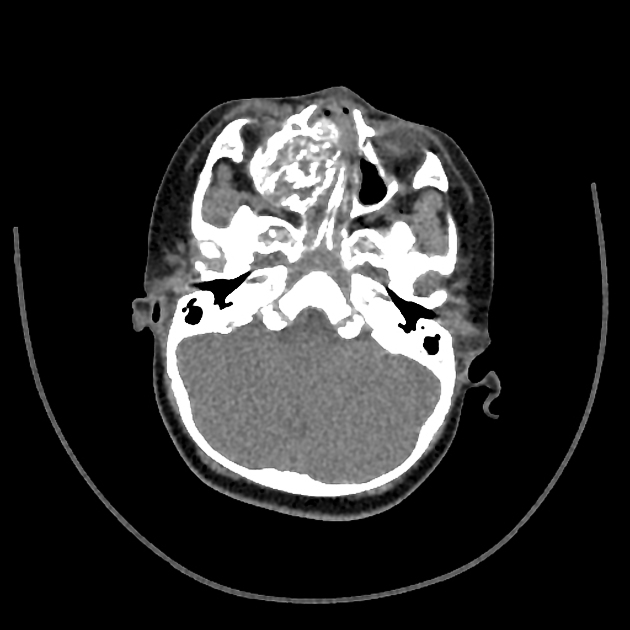Chondromesenchymal hamartomas are rare, benign, tumor-like nasal masses in children that have been associated with DICER1 mutations.
On this page:
Epidemiology
The entity is rare: a systematic review of the literature in 2015 identified fewer than 50 reported cases 2. The mean age of presentation is 10 years 2.
Clinical presentation
Patients most commonly present with nasal congestion or mass on examination 2.
Pathology
Chondromesenchymal hamartoma was introduced in the World Health Organizatiοn classification of head and neck tumors, 4th edition (2016), under the category "Tumors of the nasal cavity, paranasal sinuses, and skull base."
Location
The mass is typically centered in the nasal cavity but commonly also involves the paranasal sinuses, orbit, and/or anterior skull base 2.
Microscopic appearance
Histology shows nodular hyaline cartilage with a spindle cell stroma 1.
Genetics
Chondromesenchymal hamartoma is associated with somatic or germline DICER1 mutations 3,4. It is therefore part of the phenotypic spectrum of DICER1 tumor predisposition syndrome.
Radiographic features
The imaging appearance is non-specific, consisting of an expansile, circumscribed sinonasal mass 1.
CT
CT demonstrates polypoid soft tissue in the nasal cavity. There may be osseous erosion, internal calcifications, and cystic components 1.
MRI
The signal characteristics reflect myxoid stroma with low cellularity and variable vascularity 5:
T1: isointense to brain
T2: heterogeneously hyperintense, with some cystic areas approaching cerebrospinal fluid intensity
T1 C+: variable enhancement
Differential diagnosis
See the differential for pediatric nasal cavity masses.





 Unable to process the form. Check for errors and try again.
Unable to process the form. Check for errors and try again.